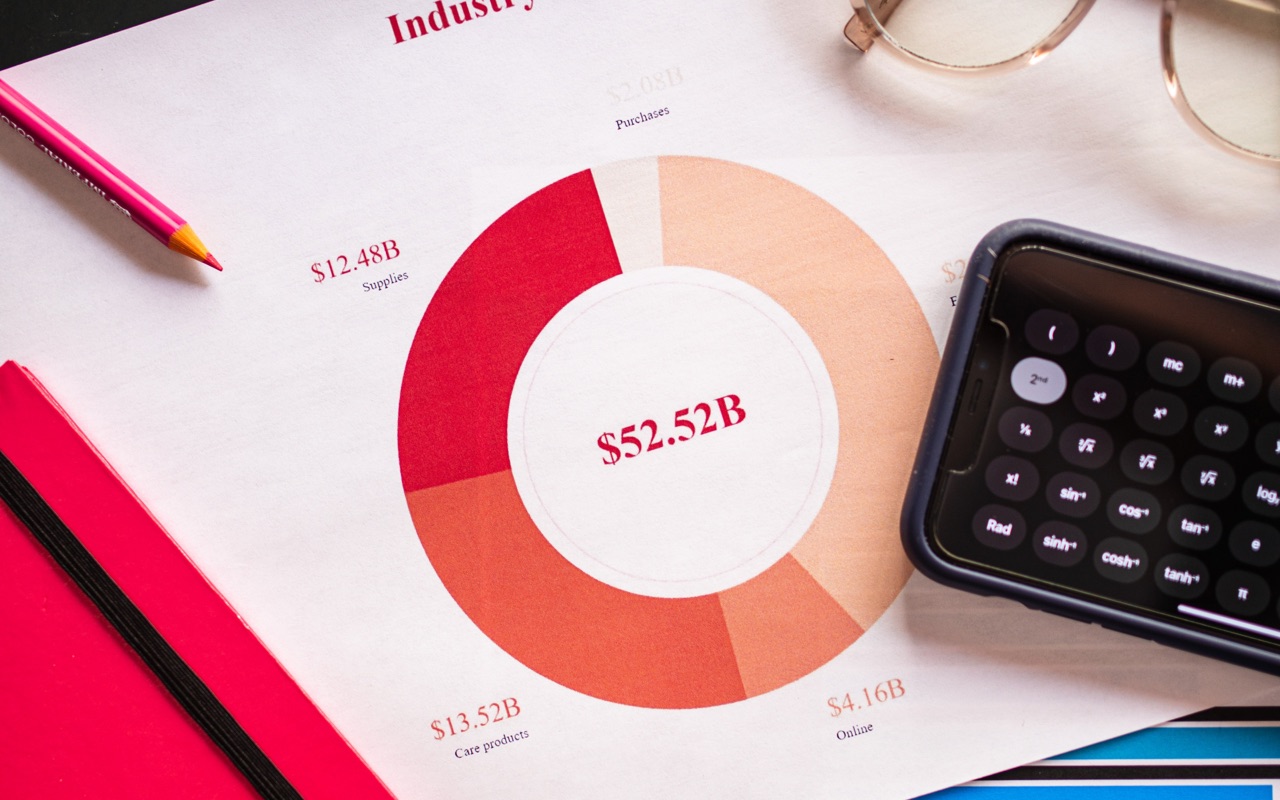Understanding ROR (Rate of Return) in Business: Essential Insights
Imagine making investment decisions without a clear understanding of the potential returns and risks involved. Sounds like a recipe for disaster, right? That’s where the concept of “what is rate of return” (ROR) comes in. It’s a crucial metric that helps investors assess the profitability of their investments, allowing them to make informed decisions and optimize their returns. So, let’s dive into the world of ROR and uncover the essential insights you need to master this critical financial concept.
Key Takeaways
- Rate of Return (ROR) is an annual rate of profitability used to measure the percentage change in value for investments such as stocks, bonds and real estate.
- Investors must understand different types of ROR including nominal, real, simple and compound annual growth rates (CAGR), as well as factors influencing it like risk-reward tradeoff and market conditions.
- Alternative metrics to ROR can provide additional insights into potential returns on investment decisions such as internal rate of return (IRR) or discounted cash flow (DCF).
Defining Rate of Return

The Rate of Return (ROR) is a measure of an investment’s profitability, expressed as an annual rate, which is a percentage of the initial investment over a given period of time. It calculates the percentage change in value for any investment, whether it is held or sold, based on the investment’s initial cost. ROR can assist in making educated decisions regarding the management of business cash and investments, as it allows investors to compare investments based on their profitability.
To grasp the significance of ROR in investment analysis, it’s crucial to familiarize yourself with its key components. The essential elements of ROR include the initial outlay, returns (which can consist of interest paid, dividends, or capital gains), and duration. ROR is applicable to a range of investment instruments, including stocks, bonds, and real estate. We will now further investigate these components along with their applications.
Key Components
The factors that influence the ROR include:
- The initial investment, which serves as the baseline or starting point for evaluation
- Earnings, which have a direct influence on the ROR as they determine stock prices
- Strong earnings can lead to an increase in stock price and a higher ROR
- Weak earnings can cause a decrease in stock price and a lower ROR
- Discounted cash flows can be used to estimate future earnings and their impact on the ROR.
The time period is a crucial factor in ROR calculation as it provides an indication of the investment’s performance over a specified duration. It enables investors to:
- Evaluate the growth or decline of their investment over time
- Compare it with other investment opportunities
- Determine the accuracy of the ROR calculation, which can be expressed as an annualized rate
- Gain valuable insights into the investment’s profitability.
Applications

Real estate investments are an excellent example of how ROR is relevant in various investment scenarios. Investors can gauge the potential profitability of their investment using ROR, computed by evaluating the gain or loss from the investment in comparison to the initial investment cost. Real estate investments can generate an average annual return ranging from 8.6% to 12.99%, contingent upon the type of investment and market conditions.
In the case of mutual funds, the ROR is vital as it measures the profitability and performance of the fund. It assists investors in estimating the potential gains or losses they can anticipate from their investment. Furthermore, the ROR enables investors to evaluate different mutual funds and make informed decisions about where to allocate their funds.
Types of Rate of Return

There are various types of ROR that investors should be aware of, such as nominal and real rates of return, as well as simple and compound annual growth rates (CAGR). Nominal ROR is the amount of money generated by an investment before accounting for expenses such as taxes, investment fees, and inflation. On the other hand, real ROR is the annual percentage of profit earned on an investment, adjusted for inflation. The real rate of return takes into account the effect of inflation on an investment’s performance over time.
We will now examine these ROR types more thoroughly.
Nominal vs. Real Rate of Return
Nominal ROR does not take into account inflation, whereas the real ROR considers the effect of inflation on investment returns. In essence, the nominal ROR reflects the actual percentage gain or loss of an investment, while the real ROR considers the effect of inflation on the purchasing power of the investment. The real rate of return provides a more precise assessment of investment performance when compared to the nominal rate of return.
Inflation plays a significant role in the calculation of the real ROR by adjusting the profit or return for the effects of inflation. The real ROR enables investors to determine the cash value of an investment after accounting for inflation, providing a clearer picture of the investment’s overall performance and the potential returns they can expect to receive.
Simple vs. Compound Annual Growth Rate (CAGR)
Simple ROR evaluates the total growth over a specified time frame, whereas CAGR calculates the average annual growth rate over multiple periods, taking into account compounding effects. The Compound Annual Growth Rate (CAGR) is an important metric for investors. It measures an investment’s annual growth rate, taking into account the effect of compound interest.
The compound rate of return takes into consideration the time value of money through the reinvestment of any returns generated. Understanding the difference between simple and compound annual growth rates is essential for investors, as it can significantly impact the overall returns of an investment over time.
Rate of Return Formula and Calculation

The basic formula for calculating ROR is (current value - initial value) / initial value * 100. This formula can be applied to various investment scenarios to determine the net gain or loss of an investment over a set period of time, expressed as a percentage of the initial value.
Now, we will inspect how this formula is practically applied at market price.
Basic Formula
The basic ROR formula helps investors determine the percentage change in an investment’s value over a specific time period. The rate of return is calculated by subtracting the initial value from the current value of the investment, then dividing by the initial value and multiplying by 100 to express as a percentage. This provides a clear and easy-to-understand measure of an investment’s performance, enabling investors to compare the returns of different investments and make informed decisions.
Example Calculations
Example calculations illustrate how to apply the ROR formula to different investment scenarios, such as stocks, bonds, and income-generating assets. The share price initially was $100. It has now increased to a current value of $130. As a result, the Return on Investment (ROR) is 30%. In another example, if a bond has an interest payment of $50 and appreciates by $200, and the original bond price is $1,000, the ROR would be ($50 + $200) / $1,000 = 0.25 or 25%.
These examples demonstrate how the ROR formula can be applied to various investment scenarios, providing valuable insights into the potential returns and risks associated with different investments. This information can help investors make informed decisions about their investment strategies and optimize their returns.
Factors Influencing Rate of Return

Several factors influence the ROR, including the risk-reward trade-off, time horizon, and market factors. Understanding these factors is crucial for investors, as they can significantly impact the overall returns of an investment over time.
We will now delve into these factors in greater depth.
Risk and Reward Trade-off
Higher potential returns often come with riskier investments. There is also an increased likelihood of loss. This is due to the increased uncertainty and volatility associated with higher risk investments. Investors must carefully consider the potential rewards versus the potential risks when making investment decisions.
This risk-reward trade-off is a crucial aspect of investment analysis and must be thoroughly understood to make informed decisions and optimize returns.
Time Horizon
The time horizon of an investment affects the ROR by affecting the level of risk and potential for growth. Generally, a longer time horizon tends to yield a higher rate of return since it offers more time for investments to increase in value and to recover from market fluctuations.
Conversely, a shorter time horizon may produce lower returns, but it provides more liquidity and flexibility for accessing funds quickly.
Market Factors
Market factors that may affect the ROR include:
- The asset mix
- The business’s strategy and operations
- The economic climate
- The growth rate of revenue and earnings
- Macroeconomic factors like the economic growth rate and inflation rate.
For example, when interest rates increase, the ROR on investments tends to decline. Conversely, when interest rates decrease, the ROR on investments may rise as borrowing becomes more affordable, stimulating economic growth and potentially leading to higher stock prices.
Using Rate of Return in Investment Decisions

Investors use ROR to measure investment performance, make informed decisions, and manage risk through diversification. By calculating the ROR of each investment, investors can assess the returns generated by different assets and distribute their investments accordingly. ROR helps in recognizing investments with higher returns and lower risk, allowing for a well-diversified portfolio.
Performance Measurement
Performance measurement plays a crucial role in assessing portfolio performance, as it provides an accurate quantitative assessment of how the portfolio has performed over a given period. Performance analysts and investment consultants utilize ROR to evaluate the success of investments, compare different investment options, and monitor the overall performance of a portfolio. Consequently, it is an essential metric in determining the financial viability and attractiveness of an investment.
Diversification and Risk Management
Diversification and risk management involve allocating investments across different assets or asset classes to minimize the effect of any single investment on the overall portfolio. By calculating the ROR of each investment, investors can assess the returns generated by different assets and distribute their investments accordingly. ROR assists in identifying investments that offer a favorable balance between risk and return, contributing to effective risk management strategies.
Alternative Metrics to Rate of Return

While ROR is an essential metric for investors, there are alternative metrics to consider, such as internal rate of return (IRR) and discounted cash flow (DCF). These metrics can provide additional insights into the potential returns and risks associated with different investments.
We will now examine these alternative metrics and their role in investment analysis.
Internal Rate of Return (IRR)
IRR is the discount rate that makes the net present value (NPV) of cash flows, including dividend income, zero, providing a measure of an investment’s annual growth rate. It is employed to evaluate and rank projects based on their anticipated yield and determine the potential annual returns of an investment in the long run, considering the investment’s initial cost.
Understanding the concept of IRR and its application in investment analysis can help investors make more informed decisions and optimize their returns.
Discounted Cash Flow (DCF)
Discounted Cash Flow (DCF) is a valuation method employed in financial analysis to estimate the value of an investment based on its expected future cash flows. The objective of DCF is to evaluate whether an investment is viable by discounting the projected cash flows to their present value.
By taking into account the time value of money, DCF enables the assessment of the current value of future cash flows and the making of investment decisions.
Summary
In conclusion, understanding the concept of Rate of Return is crucial for investors to make informed decisions, optimize their returns, and manage risk effectively. By considering factors such as the risk-reward trade-off, time horizon, and market factors, investors can select the best investments to meet their financial goals.
Furthermore, alternative metrics like internal rate of return (IRR) and discounted cash flow (DCF) can provide additional insights into the potential returns and risks associated with different investments. Armed with this knowledge, investors can confidently navigate the world of investments and make wise decisions for their financial future.
Frequently Asked Questions
What is the meaning of the rate of return?
The Rate of Return (ROR) is the gain or loss of an investment over a certain period of time, expressed as a percentage of the investment's initial cost. It provides an indication of the performance of the investment during that period and can be used to measure the success of an investment relative to its initial cost.
Is 2% a good rate of return?
While a 2% rate of return is not considered impressive in the stock market, it may be considered a good rate of return if it is achieved in a low-risk and federally insured account.
Is 20% a good rate of return?
20% is a potential return, but it requires taking risks or investing significant amounts of time in safer investments.
Is 7% a good rate of return?
7% is typically seen as a good rate of return for stock market investments, with the average ROI of the S&P 500 being around 7%, factoring in inflation. However, the appropriate rate of return depends on individual needs and risk tolerance.
How to calculate return on investment?
Return on investment (ROI) can be calculated by taking the net income from a project and dividing it by the total cost of the investment. This will provide a percentage ROI value, which is calculated as: ROI = Net income / Cost of investment x 100.
Join thousands of business-savvy entrepreneurs on our mailing list.
Curated emails that’ll help you manage your finances better.




